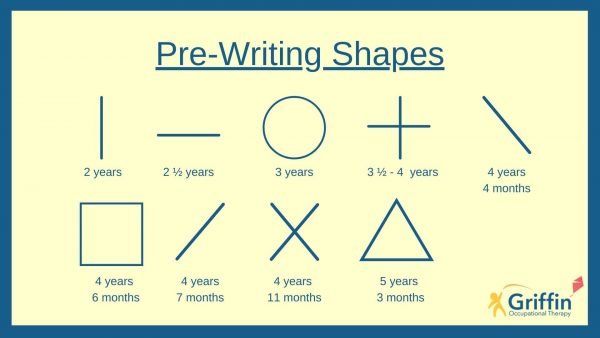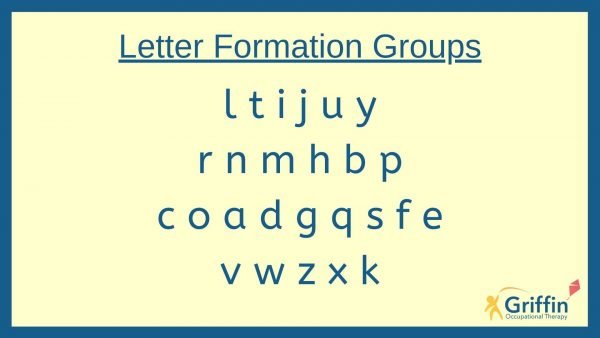Handwriting is a complex skill
Handwriting is a skill that is taught in every school. There are many approaches to teaching handwriting. Some schools focus on the cursive first approach. Others teach handwriting alongside phonics. This post will explore the weaknesses of these approaches and tell you the best way to teach handwriting. It will cover:

Handwriting is a complex skill
Handwriting is a skill that is taught in every school. There are many approaches to teaching handwriting. Some schools focus on the cursive first approach. Others teach handwriting alongside phonics. This post will explore the weaknesses of these approaches and tell you the best way to teach handwriting. It will cover
Teaching Handwriting – it’s complicated!
Handwriting is a very complex task. Moving a pencil to make letters is primarily a motor skill. However, recognising letters is a visual and memory skill. Knowing letter names and sounds relies on hearing, memory and language. Writing words and sentences requires the ability to combine all of these skills.
At its core, writing letters correctly on the page is a motor skill. It requires pencil control, knowledge of the formation pattern and the ability to visually perceive distances. Motor skills require practice to become proficient.
Handwriting is learnt
Handwriting is not a skill that humans are innately born to do. Walking, we naturally learn. General fine motor skills are learnt through play. Anyone who has watched two and three years olds play know that they are forever repeating skills. They open, close, fill, dump and constantly explore with their hands. This repetition improves their skills.
When toddlers pick up a crayon they explore. This exploration might include drawing on the walls and sofa! It then becomes more refined. They draw shapes, they draw people and they draw things. Then, they are taught to write their name.
Handwriting should be taught
The policy guidance from the National Handwriting Association [NHA] (2019 p. 31) recommends that ‘handwriting skills need to be taught both as a timetabled discrete subject and through ongoing reinforcement of skills in everyday written language activities.’ They suggest that lessons should be focussed, short and at regular intervals, but will be influenced by the age of the children and the class profile. A daily session of ten minutes is recommended for young children learning letter formations. For older children, three sessions of 15 – 20 minutes per week may work better.
Early on, there should be a strong focus on letter formations. Sassoon (1995) highlighted that ‘unless the correct point of entry and direction of stroke for each letter is taught, understood and used from the start, it is progressively difficult to alter the wrong movement pattern that is practised and becomes habitual.’
Incorrect formation patterns can make handwriting illegible. They can slow a child down as they won’t automatically finish a letter on the right side to start the next. It also makes progressing to joined-up writing more difficult. So, it makes sense to teach correct formations right from the start.
Practice provides an opportunity for teaching handwriting and letter formations correctly.
Teaching handwriting – steps to consider
Before you start – is the child ready to learn to write?
Before you begin to teach handwriting to any child, it is important to check their readiness. Can the child sit up in their chair? Do they have sufficient shoulder stability. Can they hold a pencil? Have they had experiences with colouring and drawing? Can they recognise their letters? I explore these questions further in our post – Five essential motor skills for handwriting success.
Teaching handwriting – pencil control
Pencil control is an essential part of writing letters. Colouring, drawing and pencil worksheets all give children an opportunity to improve their pencil control. Whilst there is some evidence that pencil grasp does not impact long term outcomes, as child’s grasp matures, so does their pencil control. If you need more information on pencil grasp development you can read this post – What does a good pencil grasp look like?
Pre-writing skills
Prior to writing, children need to be able to make their pre-writing shapes. Pre-writing shapes are all of the shapes that form letters. They include the directional movements a child needs to make, like diagonal lines and curves. There are many worksheets that practice these. It is also important to focus on squares and triangles as the ability to create corners is an important developmental step.
These are the pre-writing shapes in order of difficulty: | – o + / square \ x triangle.

Letters are made up of combinations of vertical, horizontal, oblique and curved shapes. Oblique lines (\ /) are much harder to write than straight lines. The age at which half of children can draw an oblique line is four years and six months (Beery, 2010).
The age where half of children can intersect both oblique lines to form an ‘x’ it is four years and 11 months. This means that several capital letters and lower case letters ‘k, v, w, x’ are actually outside of the expected age norms for many reception children. These norms should be considered, especially for children who have names including letters containing oblique lines.
Choose a handwriting scheme
This is where you have a few choices. You can decide whether to teach printing or cursive first. I explore the reason why I think printing is superior below. Secondly, you need to decide whether to teach in phonics or formation groups. I recommend formation groups and explain why below. If you’re looking for further advice, the National Handwriting Association also has written guidance.
Write Rules
Write Rules is GriffinOT’s handwriting scheme. It is a complete programme with 60 weeks of lesson plans. It’s designed to teach children letter formations correctly from the start. And, it includes fine and gross motor activities to support handwriting readiness. You can join Write Rules here. The subscription includes access to all of GriffinOT’s fine motor and handwriting resources.

Supporting Sophie
Sophie has dyspraxia. She finds learning new motor skills challenging. It takes her a lot of practice. Handwriting was really difficult for her to learn. She liked colouring as it was easier and all she had to do was decide on which colour to use. However, making the different letter shapes was hard. The ‘s’ in her name was really difficult. Her occupational therapist started working with the straight letters first. The letters ‘l’ and ‘t’ were so much easier! Her therapist taught her the letters one by one in groups that were similar. Sophie could remember that ‘a’ started like curly ‘c’ and soon she was writing short words with confidence.
Teaching handwriting – printing is superior!
As I am based in the UK, this section is very UK biased. The current UK curriculum starts children writing as young as age four. If you look at the pre-writing shapes above, you will see that the average age children can draw many shapes required for writing (/ + \ x) is between the ages of four to five. As noted above, the curriculum goals do not align with developmental abilities. This is a double whammy for children with additional needs as they are typically slower to develop these skills. So, they are starting from even further behind.
Cursive is extremely complex
Cursive writing is very complex. It adds in a minimum of two additional directional changes to each letter. So instead of ‘l’ being a simple vertical line, it becomes a curve, with an up stroke, a down stroke and a flick.
Entrance and exit strokes are actually variants of oblique lines, which are, as noted above, challenging for many children under 4 ½ years of age. The NHA (2019 p.9) advises that with continuous cursive ‘younger children in the year group and children with co-ordination difficulties, the additional stroke can complicate the letter shape.’
They also note that the overcomplicated stroke patterns can leave a number of children unable to write confidently. This is definitely something I have seen in my clinical experience, the most heart breaking example was a child with visual perception difficulties who could not actually recognise individual letters when the entrance and exit strokes were added
Teaching handwriting – why cursive first……?
Many schools opt to use cursive first. It is a focus in the UK for higher grades on the Year 3 assessments (SATS) and something which the standards officers (OFSTED) look out for. For some reason, it is seen an indicator of higher quality learning and academic performance. Given that a) once children arrive in secondary they are free to adopt which ever writing style they are most comfortable with and b) university requires electronic recording for assignments, I am not sure why cursive writing is seen as an indicator of performance.
There is some research showing that cursive first leads to faster writing in later years, however the reality is our children are just not developmentally ready to learn cursive at aged four. The movements required are far too complex. Printing is more closely matched to their development ability. (In saying that, I would still love to see a return to a play based early years, more in line with the Scandinavian education model).
Letter formation groups – the ONLY way to teach handwriting
As an occupational therapist, I firmly believe in teaching handwriting in letter formation groups. As I said above, writing is a motor skill which needs to be practiced. When coaches teach motor skills, for example tennis or swimming, similar movements are practiced together. The easier movements are taught first and then they are built on. A tennis coach would never teach a back hand first, in the same way that butterfly would never be the first stroke taught in swimming. I cover letter formation families in more depth in this post.
In some schools, this principle is lost when it comes to handwriting. Letters are taught in phonic groups rather than formation groups. What this means is that ‘s’ is taught first. ‘S’ is a highly complicated letter, especially if you add on cursive joins. It is the equivalent of starting with a back hand or butterfly. It’s certainly not going to give confidence to a reluctant writer. The letter ‘l’ on the other hand can be drawn by most three year olds. It’s a much better letter to start with!
Teaching handwriting – Phonics vs letter formation families
I understand why schools teach writing alongside phonics. It makes sense from a lesson planning perspective. Focus on the one letter all week. However, this is counter intuitive to a motor learning and also developmental readiness perspective because ‘s’ is one of the hardest letters to learn. Also, the letters in ‘satpin’ do not follow the same motor pattern. This makes them harder to learn, especially for children who have motor or perceptual skill delays.
When teaching handwriting – teach the same movements together!
Here’s the groups in order!
- l t i j u y
- r n m h b
- c o a d g q s f e
- v w z x k

It is much easier to learn similar motor movements at the same time. Learning letters in letter families, see picture, can be easier for many children as they can practice the same motor pattern every time. For example, practicing ‘c,’ ‘o,’ ‘a, and ‘d’ together reinforces the same pattern each time. However, practicing ‘s,’ ‘a,’ ‘t,’ and ‘p’ does not allow for reinforcement of any pattern.
Starting with one of the hardest letters of the alphabet, ‘s,’ can also be demotivating for children who find handwriting more difficult. Whereas, starting with the letters ‘l’ and ‘t’ means that most children in a reception class can experience success. This will help to build their handwriting confidence.
You will find many different opinions on handwriting but I hope mine has been helpful. The two take-aways are ‘please teach printing’ and ‘please teach in letter formation groups’. I explore letter formation patterns further in this post Letter formation families – the ONLY way to teach handwriting.
Where to Next?
Here’s a few articles you might be interested in



